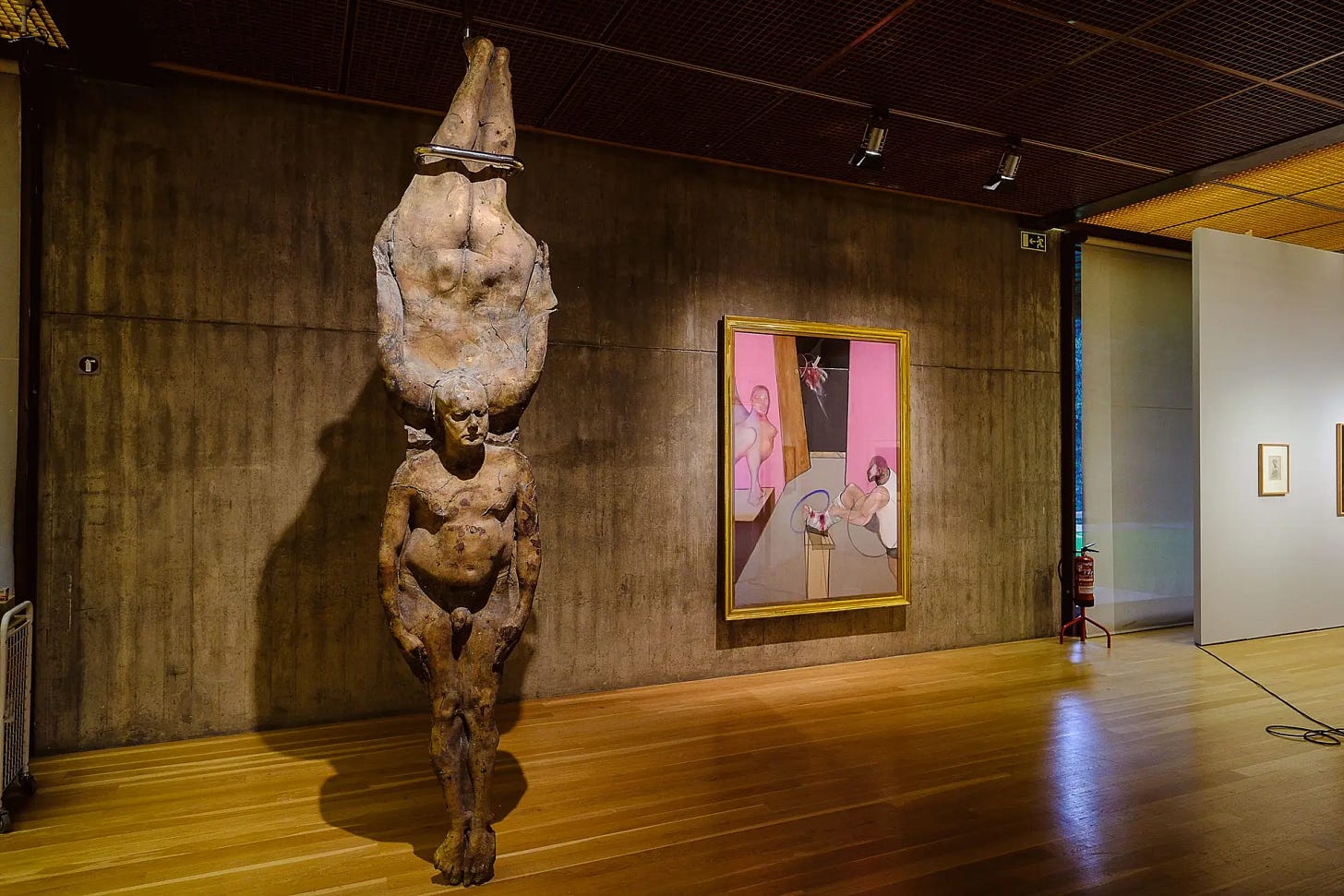Gulbenkian and Berardo Collections unite for British art exhibition
Among the featured artists are internationally renowned names such as Antony Gormley, Bridget Riley, David Hockney, Francis Bacon, Frank Auerbach, Marc Quinn, and David Bomberg.

For the first time, Portugal’s two largest institutional collections of British art—those of the Gulbenkian Foundation and the Berardo Collection—are coming together in a major exhibition.
Titled British Art – Vanishing Point, the show opens this Friday at the Gulbenkian Foundation in Lisbon and will run until July 21.
Initially planned to also take place at the former Berardo Museum, the exhibition brings together over 100 works that illustrate how international artists shaped British art in the 20th century.
The exhibition primarily showcases pieces from the Centro de Arte Moderna (CAM) of the Gulbenkian Foundation and the Berardo Collection, which is currently held at the Museum of Contemporary Art at the Centro Cultural de Belém (MAC-CCB).
Additional works from both national and international collections are also included.
According to a statement from the Gulbenkian Foundation, this marks the first time these two major British art collections have been presented together in a single exhibition.
Among the featured artists are internationally renowned names such as Antony Gormley, Bridget Riley, David Hockney, Francis Bacon, Frank Auerbach, Marc Quinn, and David Bomberg.
They are joined by Portuguese artists with strong connections to the United Kingdom, including Paula Rego, Menez, Eduardo Batarda, Fernando Calhau, Graça Pereira Coutinho, and Rui Sanches.
“The Gulbenkian collection was built through the sponsorship of young artists emerging from British schools at the time. The Berardo Collection was formed in the 1990s, mostly within a span of three or four years. This combination allows for a broader representation of emigrant and displaced artists, creating a very interesting complementarity,” explained Ana Vasconcelos from CAM, who curated the exhibition alongside Rita Lougares, the former director of the Berardo Museum, now replaced by MAC-CCB.
Displayed in the Main Gallery of the Gulbenkian Foundation, the artworks highlight the impact of artists from diverse backgrounds on the British cultural and artistic scene, particularly in the latter half of the 20th century.
During this period, London-based art schools became influential hubs, attracting talent from around the world.
The exhibition is scientifically coordinated by Sarah MacDougall of the Ben Uri Foundation in London.
A total of 46 pieces from CAM are showcased alongside 34 works from the Berardo Collection, which remain in the custody of the CCB due to an ongoing legal dispute.
Following the expiration of a 15-year agreement between the Portuguese state and collector José Berardo, the collection’s fate remains uncertain.
A court ruling has ensured that the Berardo Collection continues to be publicly displayed until a final legal decision is reached regarding its ownership.
Speaking to the press, curator Rita Lougares expressed her satisfaction at the conclusion of a lengthy three-year process to bring the exhibition to fruition.
She noted that the original plan involved a dual exhibition across both the Berardo Museum and the Gulbenkian Foundation.
However, as it became clear that the museum would be dissolved, the CCB administration opted not to proceed with the exhibition, leaving the Gulbenkian as its sole venue.
“The initial idea was to create a joint project between the Berardo Museum and the Gulbenkian Foundation. When it became clear that the museum would close, I proposed continuing the exhibition at the CCB, but they were not interested, so it remained here,” Lougares explained.
She also acknowledged the ongoing legal uncertainties surrounding the Berardo Collection. Despite the disputes, she believes it would be a significant cultural loss if the public were to lose access to the collection.
“Berardo always wanted the collection to be displayed for the public. He never collected for himself. I believe that if a consensus is reached, an agreement will be made between the banks and Berardo to ensure public access to the collection,” she said.
Lougares, who worked with the Berardo Collection for over three decades, left her role at the CCB following its transformation into the MAC-CCB in October 2023.
Although she emphasized that her departure was voluntary, she acknowledged that the institution was moving in a direction different from her own vision.
Meanwhile, Berardo has suggested relocating the collection to Madeira, raising further questions about its long-term home.
Despite this uncertainty, British Art – Vanishing Point offers a unique opportunity to experience these important works in dialogue, underscoring the global influences that have shaped British art throughout the 20th century.



